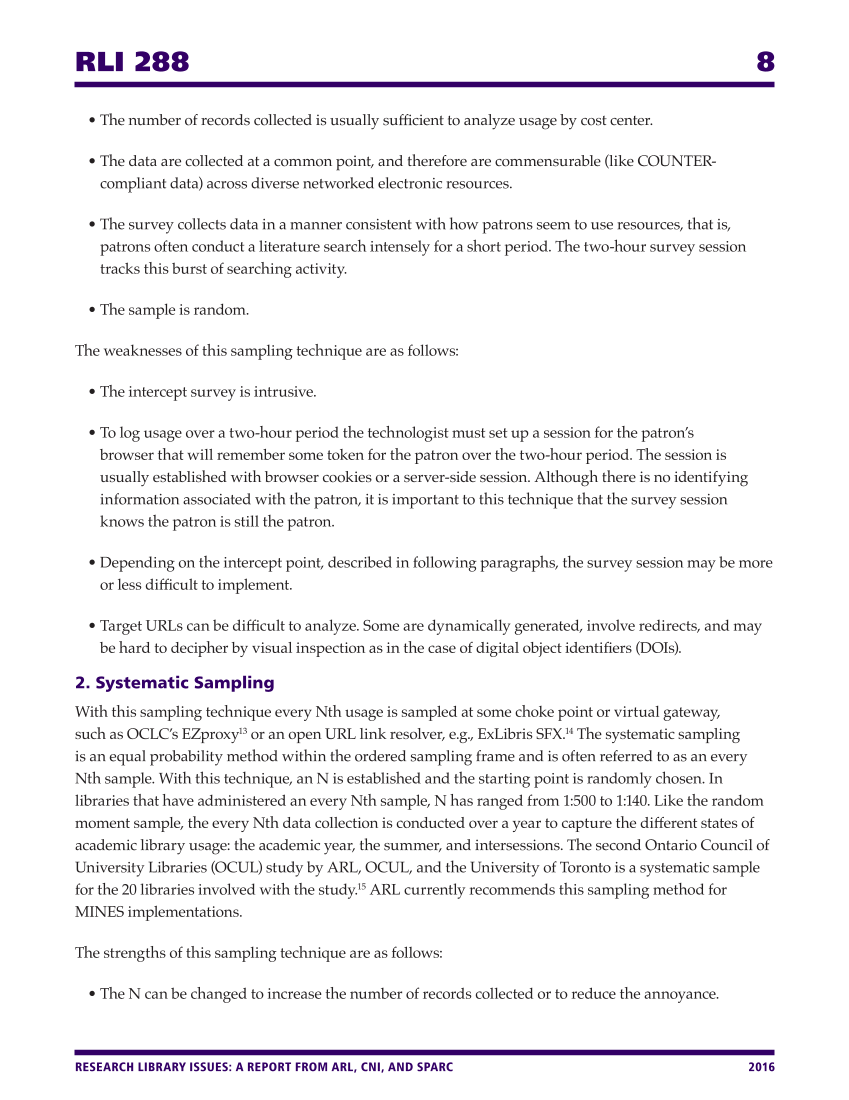RLI 288 8 RESEARCH LIBRARY ISSUES: A REPORT FROM ARL, CNI, AND SPARC 2016 • The number of records collected is usually sufficient to analyze usage by cost center. • The data are collected at a common point, and therefore are commensurable (like COUNTER- compliant data) across diverse networked electronic resources. • The survey collects data in a manner consistent with how patrons seem to use resources, that is, patrons often conduct a literature search intensely for a short period. The two-hour survey session tracks this burst of searching activity. • The sample is random. The weaknesses of this sampling technique are as follows: • The intercept survey is intrusive. • To log usage over a two-hour period the technologist must set up a session for the patron’s browser that will remember some token for the patron over the two-hour period. The session is usually established with browser cookies or a server-side session. Although there is no identifying information associated with the patron, it is important to this technique that the survey session knows the patron is still the patron. • Depending on the intercept point, described in following paragraphs, the survey session may be more or less difficult to implement. • Target URLs can be difficult to analyze. Some are dynamically generated, involve redirects, and may be hard to decipher by visual inspection as in the case of digital object identifiers (DOIs). 2. Systematic Sampling With this sampling technique every Nth usage is sampled at some choke point or virtual gateway, such as OCLC’s EZproxy13 or an open URL link resolver, e.g., ExLibris SFX.14 The systematic sampling is an equal probability method within the ordered sampling frame and is often referred to as an every Nth sample. With this technique, an N is established and the starting point is randomly chosen. In libraries that have administered an every Nth sample, N has ranged from 1:500 to 1:140. Like the random moment sample, the every Nth data collection is conducted over a year to capture the different states of academic library usage: the academic year, the summer, and intersessions. The second Ontario Council of University Libraries (OCUL) study by ARL, OCUL, and the University of Toronto is a systematic sample for the 20 libraries involved with the study.15 ARL currently recommends this sampling method for MINES implementations. The strengths of this sampling technique are as follows: • The N can be changed to increase the number of records collected or to reduce the annoyance.





































